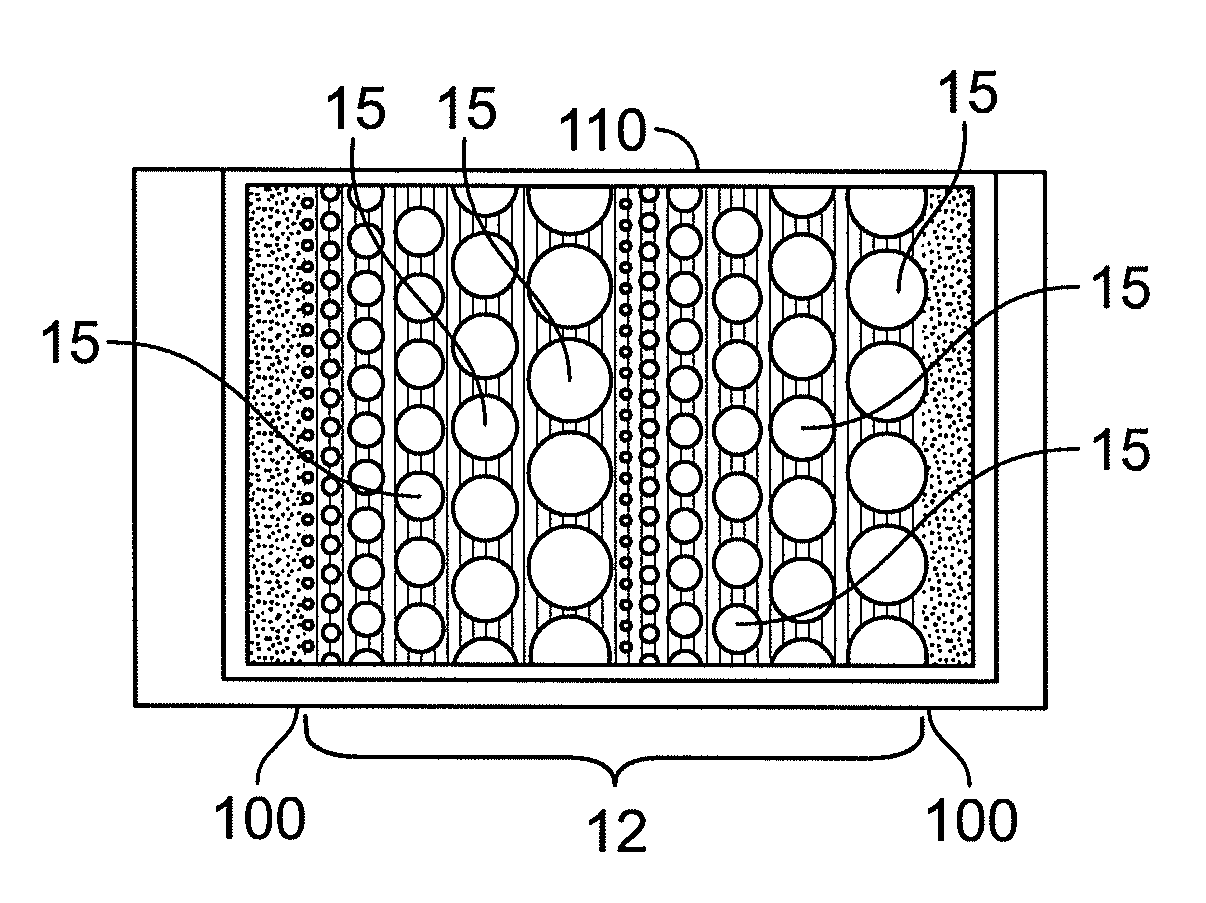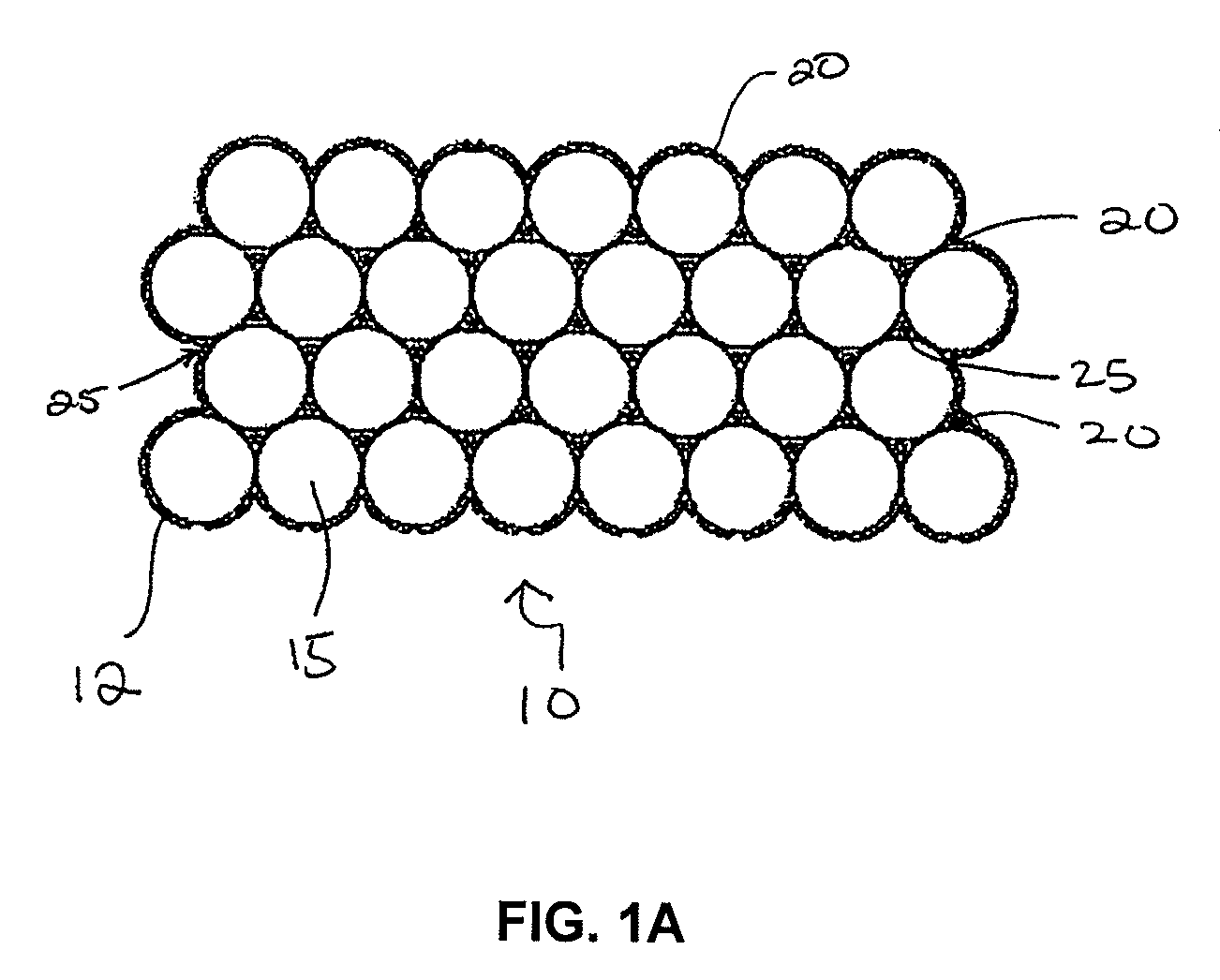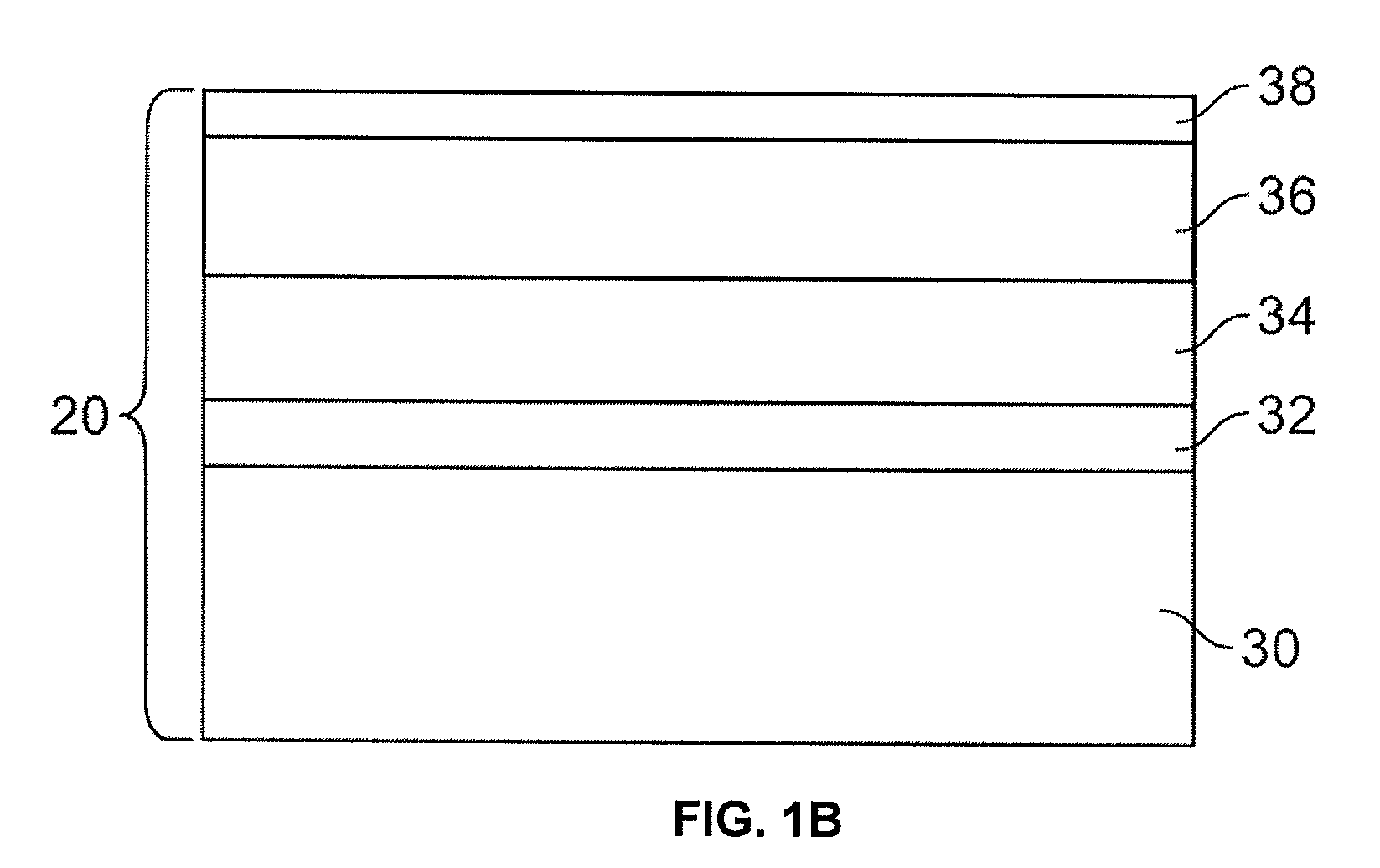Compositionally modulated composite materials and methods for making the same
a composite material and modulation technology, applied in the field of composite materials, can solve the problems of interlaminar failure and failure of composite materials, and achieve the effects of easy dumping, easy scalable, and great impact on the overall material properties
- Summary
- Abstract
- Description
- Claims
- Application Information
AI Technical Summary
Benefits of technology
Problems solved by technology
Method used
Image
Examples
example 1
[0061]A composite including a Ni foam porous substrate and an electrodeposited compositionally modulated NiFe alloy was formed in a laboratory using the following procedure. A bath was prepared using 0.2M Ni(H2NSO3)2.4H2O, 0.04 FeCl2.4H2O, 0.40M H3BO3, 1.5 g / L sodium saccharin, 0.2 g / L sodium dodecyl sulfate, 1.0 g / L ascorbic acid, and HCl to attain a pH of 3.00±0.01. A 5 cm long, 1 cm wide, and 0.16 cm thick piece of Ni foam (commonly referred to a Incofoam) having a pore size of 450 microns was wrapped in vinyl electrical tape about the width and thickness of the foam such that 4 cm of length remained uncovered on one end and 0.5 cm of length remained uncovered on the other end. The vinyl covered portions of the foam were compressed by hand. The 4 cm of exposed Ni foam was dipped into a solution including 0.1 M HCl to condition the substrate.
[0062]Electrical connection between the Ni foam and a working electrode terminal of a potentiostat, (available from Gamry Instruments, Warmin...
example 2
[0065]A composite including a porous substrate formed of a piece of carbon fabric and an electrodeposited compositionally modulated NiFe alloy was formed in a laboratory using the following procedure. A bath was prepared using 0.2M Ni(H2NSO3)2.4H2O, 0.04 FeCl2.4H2O, 0.40M H3BO3, 1.5 g / L sodium saccharin, 0.2 g / L sodium dodecyl sulfate, 1.0 g / L ascorbic acid, and NaOH to attain a pH of 3.00±0.01. A piece of wet laid carbon fabric (commercially available from MarkTek, Inc. of Chesterfield, Mo., part number C10001010T) was attached to the working electrode terminal of the potentiostat. To complete electrical connections between the electrodes and the potentiostat, a 0.5 cm by 2 cm by 3 cm piece of 40 ppi reticulated vitreous carbon was connected to the counter electrode end of the potentiostat using an alligator clip and a saturated calomel electrode (i.e., a SCE) was connected to the reference electrode terminal.
[0066]After confirming electrical communication between the potentiostat ...
example 3
[0068]A composite including a metallized polyurethane foam substrate and an electrodeposited compositionally modulated NiFe alloy may be formed in a laboratory using the following procedure. A bath is prepared using 0.4M Ni(H2NSO3)2.4H2O, 0.04 FeCl2.4H2O, 0.40M H3BO3, 1.5 g / L sodium saccharin, 0.2 g / L sodium dodecyl sulfate, 1.0 g / L ascorbic acid, and HCl to attain a pH of 3.00±0.01. A 1 cm long, 1 cm wide, and 0.25 cm thick piece of metallized, reticulated polyurethane foam having a pore size of about 450 microns and a specific surface area of approximately 1200 cm2 / cm3 is inserted and secured as the working electrode in a flow cell similar to the flow cell shown in FIG. 11. A piece of 100 ppi reticulated vitreous carbon foam is inserted and secured as the counter electrode in the flow cell. Electrical contact is made between the working electrode and the potentiostat as well as between the counter electrode and the potentiostat. A reference electrode is not used in this example.
[0...
PUM
| Property | Measurement | Unit |
|---|---|---|
| grain size | aaaaa | aaaaa |
| wavelengths | aaaaa | aaaaa |
| wavelengths | aaaaa | aaaaa |
Abstract
Description
Claims
Application Information
 Login to View More
Login to View More - R&D
- Intellectual Property
- Life Sciences
- Materials
- Tech Scout
- Unparalleled Data Quality
- Higher Quality Content
- 60% Fewer Hallucinations
Browse by: Latest US Patents, China's latest patents, Technical Efficacy Thesaurus, Application Domain, Technology Topic, Popular Technical Reports.
© 2025 PatSnap. All rights reserved.Legal|Privacy policy|Modern Slavery Act Transparency Statement|Sitemap|About US| Contact US: help@patsnap.com



